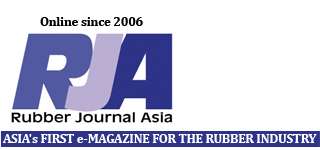Japan’s Sumitomo Rubber Industries says it has developed a rubber material that can be processed with a 3D printer . Until now, it was not possible to create rubber products with a 3D printer. It is said to have high resilience and is resistant to repeated compression, making it possible to process it with a 3D printer.
It will be possible to create products that take advantage of the properties of rubber, such as elasticity, impact resistance, flexibility, and slip resistance, which could not be achieved with the resin (plastic) that is mainly used in 3D printers. This will greatly expand the range of uses for 3D printers, it adds.
In the future, it is expected to be used in various fields such as robotics, medicine, automobiles, and sports. The company says it is also further developing the rubber material for 3D printer modelling with the aim of commercialisation in 2026.
The company says that until now, 3D printers have been able to create rubber-like products (resin products that are soft and elastic like rubber), but compared to rubber, there were issues with resilience and durability. However, by making full use of the know-how of rubber compounding and internal structure analysis cultivated over many years of tyre development, the company has succeeded in developing a rubber material for 3D printers that has the elasticity, resilience, and durability of rubber.
It is said to exhibit high resilience even when subjected to compressive loads over long periods of time and at high temperatures and has high compression durability, able to withstand 20 million repeated compression tests.
Hence, .3D printers can now be used to create products that take advantage of rubber’s properties, such as elasticity, impact resistance, flexibility, and slip resistance, which could not be achieved with mainstream resins (plastics). This will greatly expand the range of uses for 3D printers.
For example, it can be used to create finger parts for robotic hands that need to be as slip-resistant as human fingertips, or organ simulation models for medical training that have the same flexibility and elasticity as human organs.
In the future, it is expected to be used in a variety of fields, including robots, medicine, automobiles, and sports.

